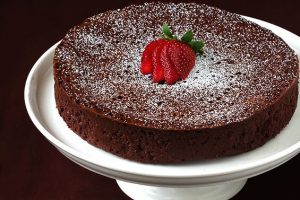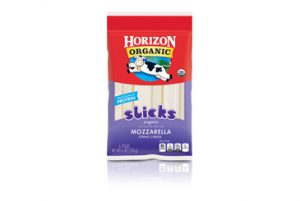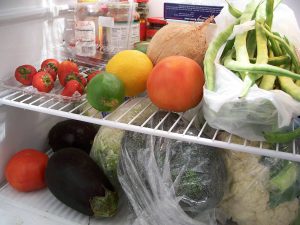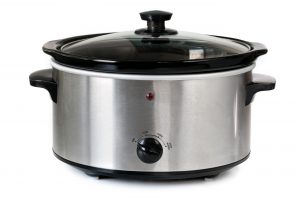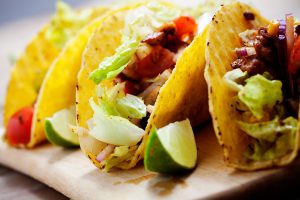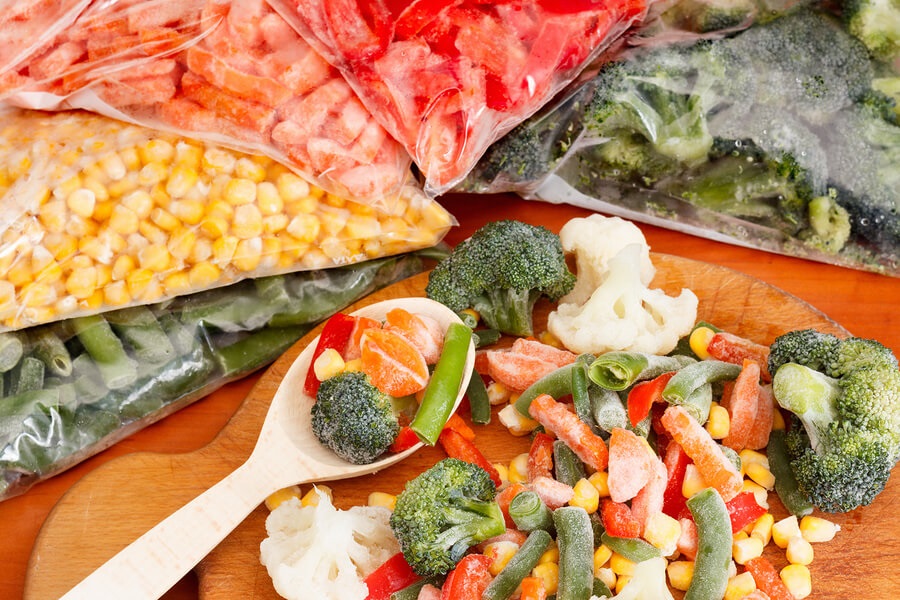
Making easy family meals is a lot like the If You Give a Mouse a Cookie books… When you think of making easy family meals, the first thought is to reach for something ready-made. Your second thought is probably about the guilt that goes into serving your kids something that has more than 5 ingredients with many you can’t even pronounce.
via GIPHY
At this point, you go overboard and think you have to cook gourmet. You look in the fridge and possibly your wallet and then maybe the clock and think: “if I only had the time, I would…”. And that’s when you reach for the ready-made, pre-packaged freezer meal.
If only there were one magic item that could cut the shame spiral and make it all better! Ah, but there is! One magic bag of frozen vegetables, bought on sale for $1, containing only 1 ingredient… frozen vegetables.
via GIPHY
Are Frozen Vegetables as Healthy as Fresh Veggies?
Yes! In fact, some may even say they are healthier. When picked at their peak, vegetables get to ripen fully and develop all of their nutrients before they are flash frozen and packaged. “Freezing preserves defects as well as superior quality,” a USDA publication reminds us, so the veggies must be top-notch to begin with.
Fresh vegetables, on the other hand, are picked just before they are ripe and finish ripening when they’re on their way to the store. They don’t get a chance to fully achieve their nutrition potential before they’re shipped off.
Freezing doesn’t work with every vegetable, however. Green beans, for instance, can get mushy, and cucumbers aren’t great for freezing at all. While the process does lower the Vitamin C content of most vegetables, the other nutrients are preserved, and so is the flavor and texture.
10 Uses, 1 Bag (or More) of Frozen Vegetables
via GIPHY
With all this in mind, here are 10 great ways to use frozen vegetables to amp up the nutritional value of every meal without sacrificing flavor or time:
- Cool off macaroni and cheese by adding ¼ cup of frozen corn or peas and carrots.
- Add ½ cup of peas, frozen chopped spinach in a bag (not the box, which is harder to thaw), or mixed soup vegetables into hot soup for the last 5 minutes of cooking. Heating the vegetables just before serving lets them retain their nutrients and prevents them from getting mushy.
- Add cauliflower rice to your stir-fry recipes for a flavor-free nutrient and fiber boost. Cauliflower rice is simply cauliflower that has been chopped into tiny, rice-sized pieces.
- Add ½ – 1 cup of riced cauliflower to your family-sized mashed potato recipe to reduce the white-starch guilt and calorie count of traditional mashed potatoes. Substitute it for the potatoes entirely for a paleo-friendly side dish!
- Assemble a no-cook black bean salsa (recipe below) and include frozen corn and bell pepper slices. The frozen veggies will thaw as the salsa marinates in your fridge.
- Thaw frozen vegetables like carrots, broccoli, cauliflower, or okra in the fridge, and toss with olive oil, a dash of fresh squeezed lemon, and salt and pepper to taste for a simple side dish.
- Add chopped, thawed spinach to your favorite dip recipe. While dinner is cooking, satisfy your hungry crowd by serving veggies before dinner: set out carrot sticks for dipping or spread the dip on a celery stalk and top with halved cherry tomatoes for a savory version of ants on a log (ladybugs on a log, anyone?)
- Shepherd’s pie is a great way to use leftover meat by disguising it as a whole new dish! Layer a baking dish with cooked ground meat, crumbled tofu, or minced roast chicken. Add a layer of your favorite thawed frozen vegetables, and top with mashed potatoes. Bake at 3500 for 30-40 minutes or until thoroughly heated.
- Add 1/2-1 cup of frozen vegetables to your favorite quiche recipe.
- Roast frozen vegetables. Use 1-2 pounds of a mixture of your favorite frozen vegetables. Make sure the veggies you choose are relatively equal in size. Bite-sized carrots won’t cook evenly alongside giant broccoli florets, for example. Thaw the vegetables, spread them in a single layer on a rack over a lined roasting pan, then toss with a scant tablespoon of olive oil, salt and pepper, or your family’s favorite seasoning to taste. Roast at 4000 for 15-40 minutes, depending on the size and texture of the vegetables. Shake the pan to rotate the veggies every 5-10 minutes. Remove from the oven when crispy, browned, and cooked through.
No-Cook Black Bean Salsa
You probably already have all the ingredients you need to create this deliciously simple side dish. Feel free to swap ingredients based on your taste and what you have on hand, substituting black beans for red, adding chopped tomatoes, jalapenos, nopales (pickled cactus), or even diced mango. Perfect for picnics or as a taco night staple.
Adapted from Bobby Flay’s Mesa Grill Cookbook
Ingredients
- 1 lime, juiced
- 2 tsp. extra virgin olive oil
- 1 can black beans, drained and rinsed
- 1/2 cup frozen corn (not thawed)
- 1 tablespoon chili powder, minced (or more to taste)
- 1 garlic clove, minced
- 1/4 cup cilantro, chopped
- 1/2 cup frozen diced onion (not thawed)
- 1/2 cup frozen diced red, green, and yellow peppers
- salt and freshly ground black pepper, to taste
Directions
- Combine all ingredients in a large bowl and mix well
- Let sit, refrigerated, for at least 2 hours
- Bring to room temperature before serving
What’s your favorite use for frozen veggies? Share your ideas in the comments below!
